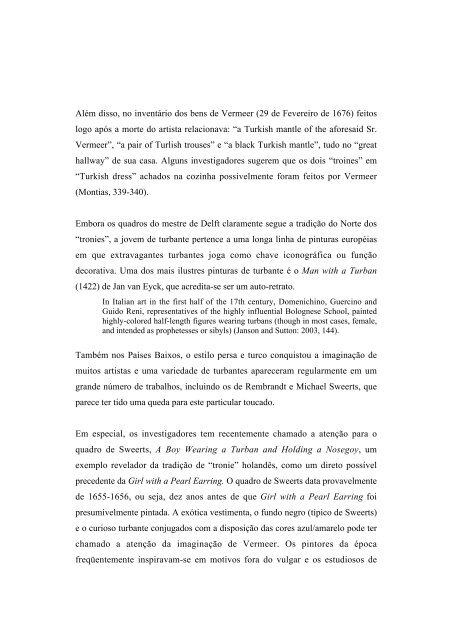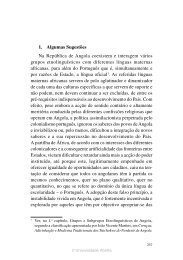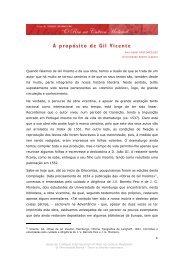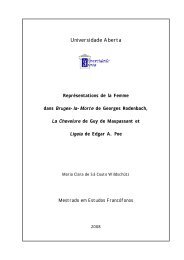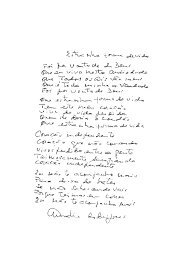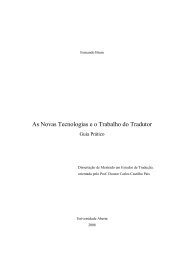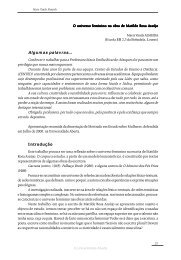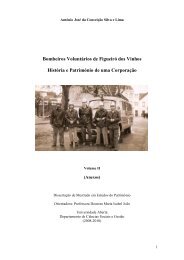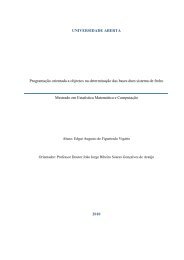Diálogos Transdisciplinares em Girl with a Pearl Earring: a Arte ...
Diálogos Transdisciplinares em Girl with a Pearl Earring: a Arte ...
Diálogos Transdisciplinares em Girl with a Pearl Earring: a Arte ...
Create successful ePaper yourself
Turn your PDF publications into a flip-book with our unique Google optimized e-Paper software.
Além disso, no inventário dos bens de Vermeer (29 de Fevereiro de 1676) feitos<br />
logo após a morte do artista relacionava: “a Turkish mantle of the aforesaid Sr.<br />
Vermeer”, “a pair of Turlish trouses” e “a black Turkish mantle”, tudo no “great<br />
hallway” de sua casa. Alguns investigadores suger<strong>em</strong> que os dois “troines” <strong>em</strong><br />
“Turkish dress” achados na cozinha possivelmente foram feitos por Vermeer<br />
(Montias, 339-340).<br />
Embora os quadros do mestre de Delft claramente segue a tradição do Norte dos<br />
“tronies”, a jov<strong>em</strong> de turbante pertence a uma longa linha de pinturas européias<br />
<strong>em</strong> que extravagantes turbantes joga como chave iconográfica ou função<br />
decorativa. Uma dos mais ilustres pinturas de turbante é o Man <strong>with</strong> a Turban<br />
(1422) de Jan van Eyck, que acredita-se ser um auto-retrato.<br />
In Italian art in the first half of the 17th century, Domenichino, Guercino and<br />
Guido Reni, representatives of the highly influential Bolognese School, painted<br />
highly-colored half-length figures wearing turbans (though in most cases, f<strong>em</strong>ale,<br />
and intended as prophetesses or sibyls) (Janson and Sutton: 2003, 144).<br />
Também nos Países Baixos, o estilo persa e turco conquistou a imaginação de<br />
muitos artistas e uma variedade de turbantes apareceram regularmente <strong>em</strong> um<br />
grande número de trabalhos, incluindo os de R<strong>em</strong>brandt e Michael Sweerts, que<br />
parece ter tido uma queda para este particular toucado.<br />
Em especial, os investigadores t<strong>em</strong> recent<strong>em</strong>ente chamado a atenção para o<br />
quadro de Sweerts, A Boy Wearing a Turban and Holding a Nosegoy, um<br />
ex<strong>em</strong>plo revelador da tradição de “tronie” holandês, como um direto possível<br />
precedente da <strong>Girl</strong> <strong>with</strong> a <strong>Pearl</strong> <strong>Earring</strong>. O quadro de Sweerts data provavelmente<br />
de 1655-1656, ou seja, dez anos antes de que <strong>Girl</strong> <strong>with</strong> a <strong>Pearl</strong> <strong>Earring</strong> foi<br />
presumivelmente pintada. A exótica vestimenta, o fundo negro (típico de Sweerts)<br />
e o curioso turbante conjugados com a disposição das cores azul/amarelo pode ter<br />
chamado a atenção da imaginação de Vermeer. Os pintores da época<br />
freqüent<strong>em</strong>ente inspiravam-se <strong>em</strong> motivos fora do vulgar e os estudiosos de


